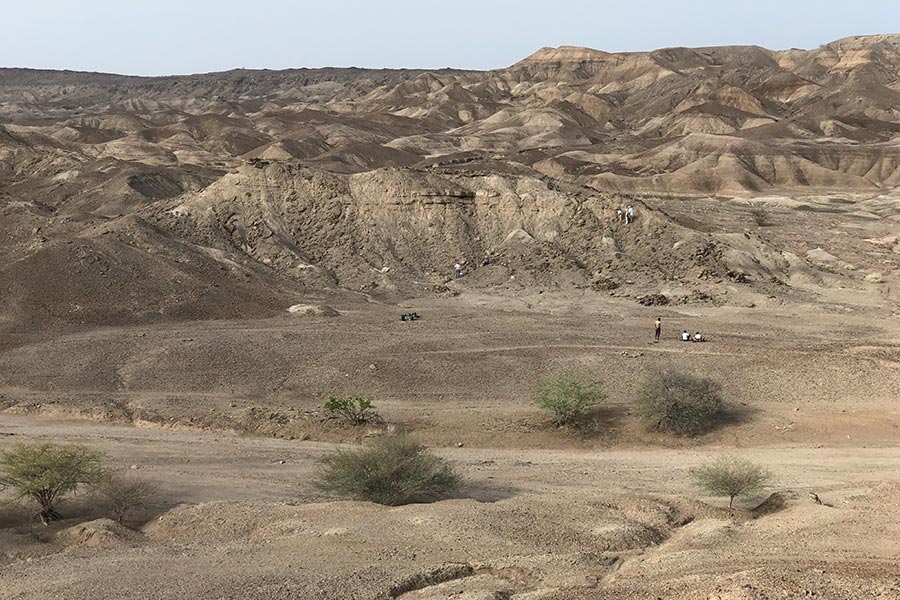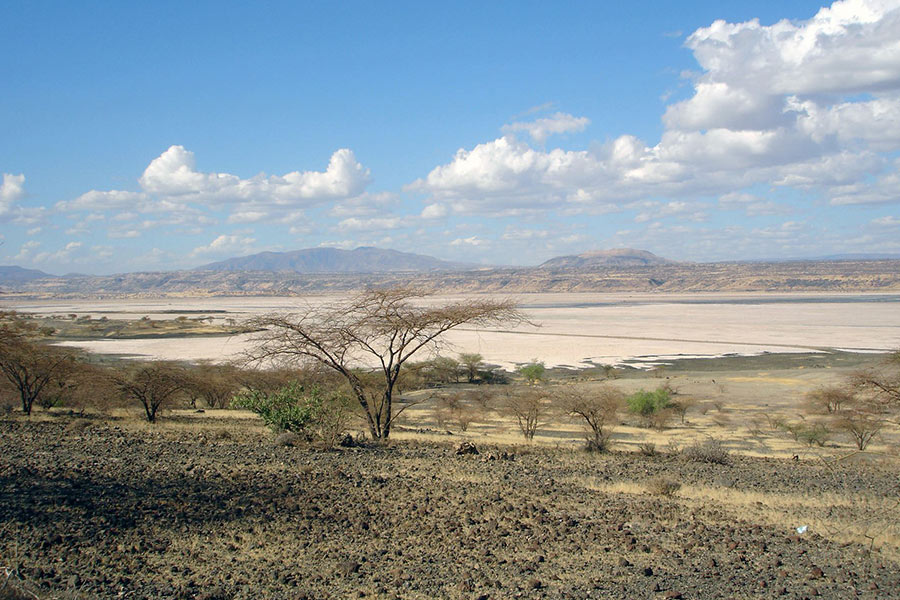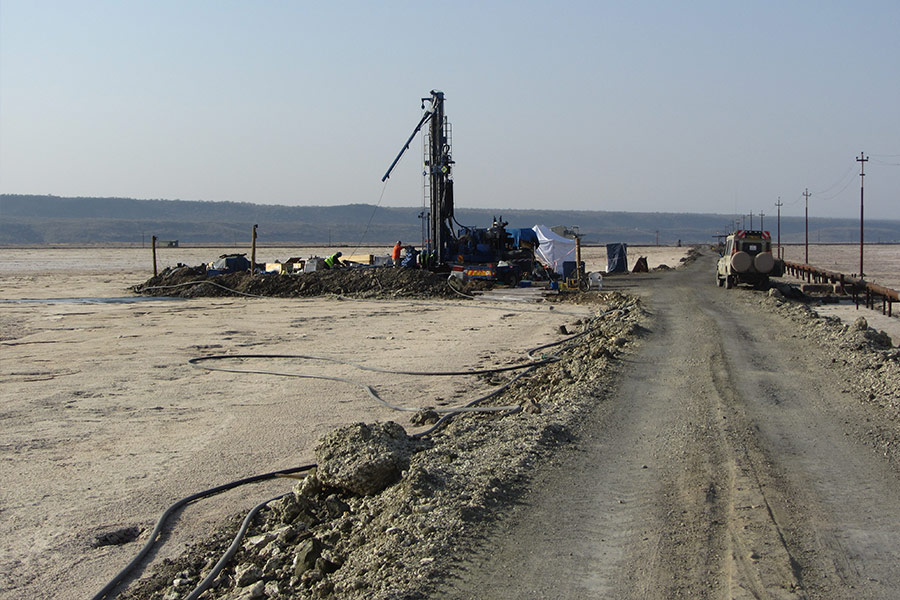- Paleoenvironmental studies are thus far limited to low-resolution, incomplete sediments from outcrops and far-off ocean core data
- The Hominin Sites and Paleolakes Drilling Project (HSPDP) seeks to address this issue by using lake cores from sites near hominin localities
- Initial analyses using these cores imply that climate variability played a significant role in human evolution
- http://hspdp.asu.edu/
Highlights
The potential role of climate and environmental change over human evolution has been studied by paleoanthropologists since the first human fossils were found in Africa. Over the years, many ideas have been put forward that key human traits were adaptations to open, or uncertain environments, respectively. These ideas are based on environmental reconstructions about the ancient past derived from sediments, chemical compositions, soils, plant and animal fossils, and many other environmental proxies. These materials are often sourced from outcrops, where the fossils are found, and ocean cores drilled around the globe, both of which have pros and cons.
On top of the cliff or deep in the ocean
Outcrops, or rock formations visible on the surface that contain human fossils, are often subjected to surface weathering, erasing a lot of the sedimentary rock record (e.g., the organic traces left in the rocks) and giving incomplete information. Outcrops also tend to provide low resolution data—that is, the rocks may only preserve changes through time on the order of hundreds of thousands of years—which is not as helpful, since the human fossil record shows significant changes and diversity through time at magnitudes much smaller than that! Ocean cores, on the other hand, have high resolutions, but are gathered quite far from the sites where human fossils are found.

An outcrop (also called an exposure) is a rock formation that is visible on the surface or an area of land where the underlying rocks are exposed. An outcrop/exposure would be one hillside/hillface of exposed sediments like in this image. The vertical exposures are similar to what you see in road-cuts on freeways. Road-cuts could be considered an outcrop or an exposure.
Image credit Christopher Campisano
Deep-drilling at hominin sites

Lake Magadi, Kenya.
Image credit Christopher Campisano
The Hominin Sites and Paleolakes Drilling Project (HSPDP) seeks to address these issues. By collecting cores from “paleo” or ancient lakes near key fossil sites, the HSPDP aims to provide a high-resolution sedimentary record that is within close proximity of where our ancestors lived. This allows scientists to better reconstruct past environments at critical intervals and to test hypotheses linking environments and evolution.

Drilling rigs in dry lake beds, Kenya.
Image credit Christopher Campisano
The lake sites included in HSPDP are found in eastern Africa. These are:
- The Northern Awash (Ethiopia)
- Baringo Basin/Tugen Hills (Kenya)
- West Turkana (Kenya)
- Southern Kenya (in Olorgesailie and Lake Magadi) (Kenya)
- Chew Bahir (Ethiopia)
These sites date from around 3.4 million years ago to the present, which captures an incredibly significant period of hominin evolution.

Map of the drilling sites for Lake Magadi.
Image credit Christopher Campisano
What the cores are telling us
Initial results from the HSPDP have shown that eastern African environments, including vegetation and climate, were characterized by high variability around 1.72 to 1.6 million years ago when Homo erectus was still roaming around. These reconstructions were based on the hydrogen isotopes from leaf waxes that were preserved in the lake cores. Human ancestors would have been subjected to these abrupt climate changes, driving an evolutionary selection to “generalist” traits that would allow flexibility in different environmental settings, such as the enlargement of the brain. Indeed, the first Acheulean stone tools were found at around this interval, at around 1.76 million years ago.
Drilling core samples in the field. Image credit Christopher Campisano
Drilling core sample split for analysis. Image credit Christopher Campisano
Representative rock and sediment compositions found in HSPDP drill cores. Image credit Christopher Campisano
Periods of high environmental variability were also recorded at around 525,000 to 400,000 years ago in southern Kenya. According to the Lake Magadi sediments, the environment cycled between wet and dry periods within a backdrop of increased aridification starting at around 575,000 years ago. These intervals coincide with mammal extinctions at the South Kenya Rift and the last appearance of Acheulean stone tools (500,000 years ago), and precede the appearance of the Middle Stone Age tool kit (320,000 years ago). Thus, this high-variability environmental trend may also help explain some of the physical and cultural adaptations of our species, Homo sapiens.
Our understanding of human evolution has certainly made leaps and bounds since paleoanthropology first started. However, with these bounds come even more questions, and how human evolution was influenced by environments is one of them. High-resolution sedimentary records provided by projects such as the HSPDP have shed some light on these queries. Future analyses using these records will certainly help us better understand out evolutionary past.
Written by Eunice Lalunio